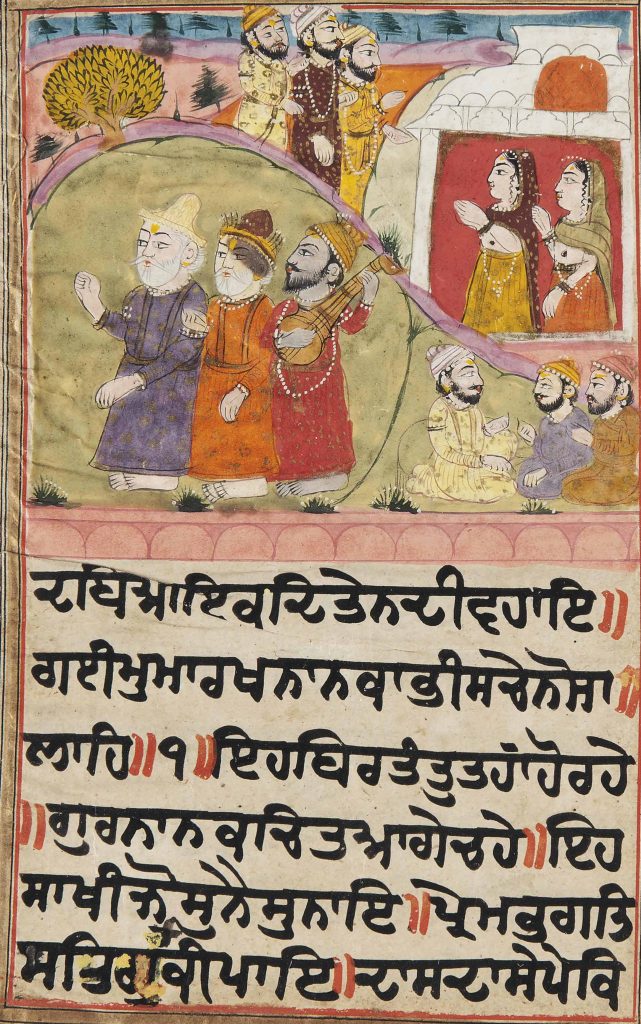Explore the life of Mata Tripta, mother of Guru Nanak, and her impact on Sikh history. Learn about her journey through key historical texts.
ADI SAKHIAN (adi = first; sakhian, plural of sakhi = anecdotes, stories, discourses, parables) is one of the early compilations but not the first of the extant janam sakhi traditions to evolve. The manuscript, dated 1758 Bk/ AD 1701, and copied by Shambhu Nath Brahman was first located by Dr Mohan Singh Diwana. While teaching at Panjab University, Lahore, prior to the partition of India in 1947, Mohan Singh Diwana discovered in the University`s library a janam sakhi manuscript which differed from other extant Janam sakhis and bore an earlier date. Dr Diwana believed it to be a version of the earliest of all janam sakhi traditions and bestowed on it the name Adi Sakhian.
Delve into the rare anecdotes of Guru Nanak's life in the B40 Janam Sakhi manuscript with unique narratives and 57 illustrations.
Explore the life of Guru Nanak in this vivid verse account, symbolizing a rising sun dispelling darkness in kaliyug. A timeless read of 1849.
Explore the spiritual journey of Ubare Khan, a Pathan devotee of Guru Nanak from Jaurian village, obtaining spiritual insight through devotion.
Uncover the secretive Aghori sect of Saivism, linked to Kapalika traditions and known for extreme rituals and spiritual beliefs.
Dive into the life stories and teachings of Guru Nanak through traditional Janam Sakhi narratives. Discover the evolution of these sacred accounts.
Discover Nankana Sahib, Guru Nanak's birthplace, with historical gurdwaras and cultural significance in Pakistan's Sheikhupura district.
ANABHI, a Jain hierarch, who, according to Puratan Janam Sakhi, met Guru Nanak during his journey to the South. Anabhi addressed the Guru thus: "Eatest thou corn, old or new, consumest thou parched gram, and drinkest thou cold water without filtering to ensure absence of living organisms; yet thou art called a Guru. What merit dost thou possess if thou art constantly killing living beings?" Guru Nanak, according to Puratan Janam Sakhi, recited verses saying: "By the Master`s grace is faith fulfilled," and not by "having the hair of one`s head plucked, drinking befouled water and begging others for leftovers to eat. "Anabhi, says the Janam Sakhi, took the precept and became a disciple.
Explore the versified biography of Guru Nanak by Sant Das Chhibbar, based on Janam Sakhi Bhai Raidas. Discover the poetic narrative of Sikhism's founder.




